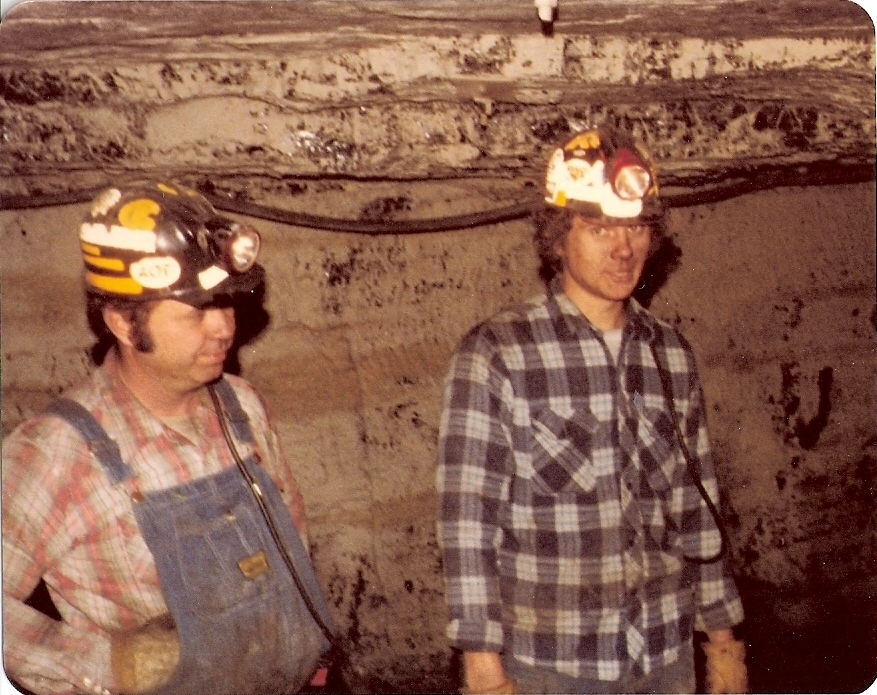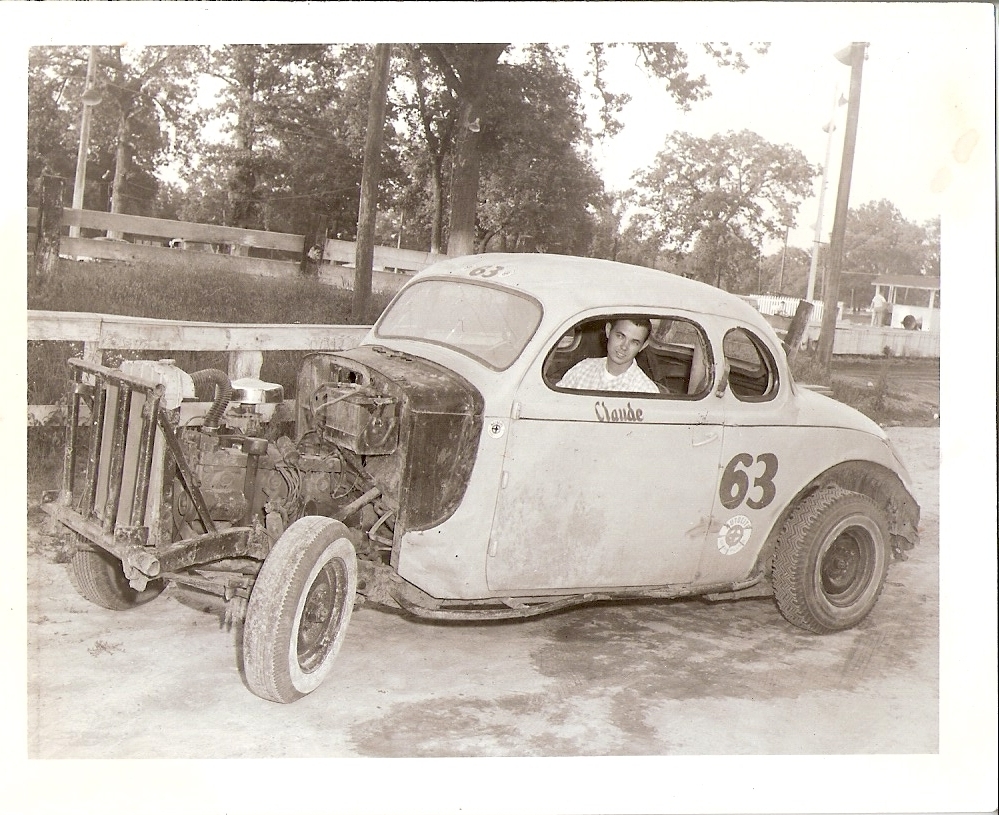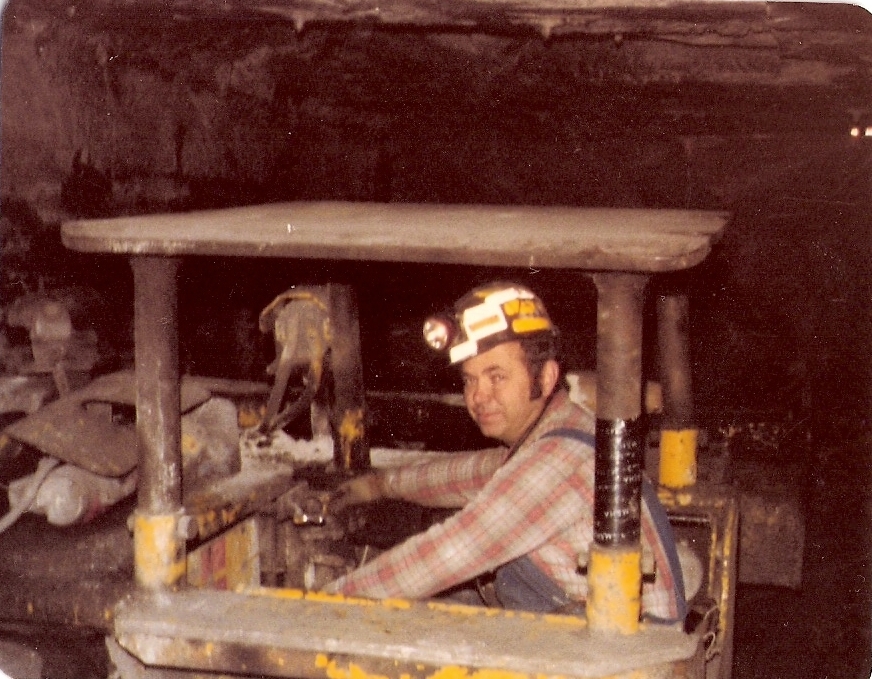TRANSCRIPTION
Can you describe your early childhood in Illinois?
I was raised on a farm. I want to a country school until the seventh grade; it was a one room schoolhouse with probably ten kids altogether. I went to town for junior high and on through high school. I was raised in the country; a farm boy.
While going to the country school, what were the ages of the other students?
They were one through the sixth grade. I was the only one person in my class. I was the smartest one and the dumbest one in the class.
When did you get your first job?
As soon as I got out of high school. Well, I worked on a farm all my life, you know, that was my first job. My first job with public work was when I got out of high school. I worked on construction for a little while, then I went to work for a plant, worked there for a little while. Then I went to work for a car, a place where they sale cars and I worked there for three years and then I went to work for a Caterpillar place; a place where they sold Caterpillars. I worked there for, nine months I think; and then went to air condition and refrigeration school and I worked at that for a little over three years; and then I went to work the coal mines. And that's about the rest of my (career).
What kind of training did you have to go through to become a coal miner?
None; you just put a helmet on and went to work. You didn't, you couldn't work at the face for the first year; you couldn't run any equipment at the face, you know, you had to get a year of experience in as a labor before you, you go into the face and work.
Throughout your career as a miner, what different jobs did you perform?
I've done about everything. I worked the first year as a labor, then I went on (as) a roof bolter, worked as a roof bolter for a while till I learned that, then I went on a buggy hauling coal, and then I went to work, moved up on the machine, continuous miner; and I worked at that for several years, and I worked as a foreman. And I worked; started in the mines August 22, in 1966, and I got hurt in; well the last I worked was in October of '91, when I had to quite cause I got hurt.
How did you machines assist the miners?
Well, they cut the coal out of the face. It was, pretty dusty.
Can you describe a regular day while using the machines?
Well, you; there were two of you running a machine, you of you would run the machine for four hours and the other one would pulled the cable, handled the cable and hung curtains, and for the next four hours you switched off. While your buddy ran the machine you handles the cable and the curtains and when he handled the cable and curtains you ran the machine; unless it was an inexperience guy, then the breaker broke them in, you know, then he just took turns with you, but he didn't run it near as much as you did. It probably took six month for a guy could get to run a machine to where he can handle it by himself.
How long were your work hours?
The mines I worked at worked three shifts. And you would work; the day shift was from eight to four, the second shift was from four to twelve, and (the third shift was) from twelve to eight again. You worked a month of each. You worked a month at the days, then you went to seconds and then to thirds. Usually worked five and six days a week. Sometimes if somebody was off on the following shift, then you, on your job, would double over and worked two shifts. And some of the coal I worked in was; well when I first started working in the mines it was about a thousand feet deep. You rode a shaft, on got on, just like an elevator, we called it a cage. You got on a cage and when below and then got on a mantrip and rode inside it was, like I said, a thousand foots the deepest I ever worked in; and then you went anywhere from shaft to five miles back in to Marian. Usually about five miles was as far back as any of them would go, then they'd sink a new shaft, because then it got too far; took you too long transportation wise. And then the last mines in worked in was LoCoal; it was only forty eight inches tall. You didn't get to straighten up all day. When you ran a machine, you sat all hunkered over and you didn't straighten up all day. And a lot of day you worked sixteen hours instead of eight. At least once or twice a week we worked sixteen instead of ten, or eight. Most of the time (at Low Coal) we worked ten. It was just according to how things were going, cuz they were smaller mines. If you had trouble and you didn't get enough coal right, then you worked six day and if you didn't have enough coal out by six days, then you worked seven. It was just however many hours it took cuz you had contracts to fill. It was just part of the job. It was, it was different you know. As you can imagine, you know, working where you had to bend over, you couldn't, you know, forty eight inches isn't that tall, all day long sometimes sixteen hours. You walked bent over with your hands behind your back, you know. And most guys had back trouble in the mines. There was a lot of heavy lifting and there's a lot of dust. A lot of people had black lung. I was fortunate I worked the face, never wear a mask. (But) I never had no lung problems. All I had (was a) big chew of tobacco in my mouth and just spit in out. It helped you eat up the dust. But it was a pretty good job, money wise. And a lot of people get hurt, but they do at anything, you know. I mean it's no different than anything else.

Why did you decide you go into mining?
Well it had real good insurance. My dad was a coal miner, and I just always thought I'd like it and I did. I liked it till I got older, you know, when you get older you can't get a job doing anything else so you have to stay with it. But, like I said, it takes a certain type of person like the coal mines.
How was the lighting in the mines?
You had a bug light on your head. You would wear a hard hat and it would have a bug light on it. If your battery went down, you was it trouble. If you were by yourself, you had to wait till someone came through, you know. Cuz it was total darkness, you could see your finger till it touched you. It was total darkness. And you did have no walky-talky or nothing on you. But if you worked at the face, then there was, the machines had headlights and stuff on them. But if you were an examiner or a belt shoveler out but yourself, well. But you could usually tell if you light was going getting dim, then you started hunting for a telephone, some where to call for help. But you have examiners that walk the whole mines, you know, that's all they do. For their eight hour shift, just walk around and check for gas and bad top and stuff like that. But if you never been below in one, you can't imagine what it's like, yes sir. I took both my boys below and looked at it. Clint didn't like it, Jack did. Fact, soon as he got out of high school, he went to work with me. He worked for awhile, till he decided to quit and went to Florida. Like I said, in our part of the country where I'm from, it was about the highest paying job you could get unless you had a college education. You could make, you know back when I started in the mines in '66, I made $26 a shift. I don't remember what the hourly wage was you got; the face shift got one pay, and then you got like 10% more for (the) second shift, and 20% for (the) third shift. And when I first started, they mined coal two shifts, and the third shift you done eye work, you know, work on the machinery and done roof bolting that they were behind on or whatever needed to be done; put in belt. Then later on they went to three shifts. They would have one unit that did eye work, you know. Every unit would be out at one shift a day unless another broke down, then they would go there and take that one off. But like I said, it was like anything else, it was just a job.
Would you ever (recommend) this job to anyone?
Well, it was a good paying job. It was a dangerous job; dirty job. But I liked it you know, cause I had the schooling for air conditions and refrigeration; I didn't like dealing with the public with that, so I went to work in the mines.
As a miner, what hobbies did you have on your off time?
Messed with horses. That's was I've done all the time.
Is there anything else you want to add about your job at the mines?
Not really. It's just like anything else. If you didn't like it, you didn't stay, if you did, you stayed, you know.
When did you meet your wife Artie?
When I was in (high) school. We got married when she was still in school; she was in high school. I was 18 and she was 17; a long time ago. We've been married 48 years. We got married in '59; so it will be 49 years this year. We got married in December of 1959. Pretty young.
What made you move down to Floresville?
To be with Clint and the girls. Just came down here with them.
Will you be moving back to Illinois some time soon?
Possible, we've been considering it.
Will you be moving to the same town?
Yeah, in the same area. We never did live in no town. We always lived in the country. Never could handle town. Until I moved out here, I lived within a 50 mile radius all my life. And Artie was born in West Virginia; Pittsburg. But she was probably 2 or 3 years old when she moved out to where we was from. I've known her through high school, well I wasn't no fan of hers until we got to high school. But I had a pretty good life.

Is there anything else you would like to add to this interview about your life?
No. Like you said, you asked about hobbies. For eight years I raced cars too. At one time I had a drag race car and most of the time rolled them. (I) raced on an oval track. We drag raced; my brother had, in '65, held the record in Indiana for a quarter of a mile. He had a Dodge that ran 133 mile an hour on that quarter mile. It was pretty quick, still pretty quick. We had a lot of fun racing. Of course had horse all my life; we showed the horses. And like I said, we had, all our hobbies and stuff we did with the whole family. But that was about it, up until we moved out here.

